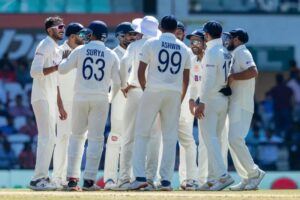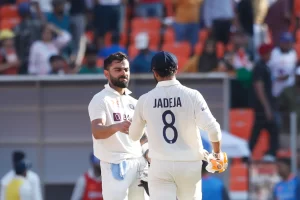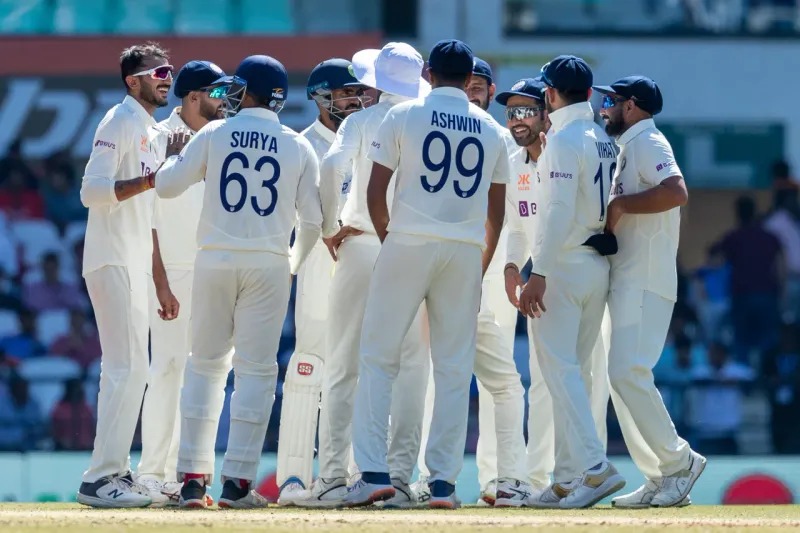
Making a second straight World Test Championship final is something to savour, especially when you look at Indian cricket’s history. It’s time too to name the trophy after Jagmohan Dalmiya, whose foresight made all of this possible.
Thanks to the genius of New Zealand’s Kane Williamson and the hitting prowess of Daryl Mitchell, India were assured of a place in the World Test Championship final even before the players took the field for the post-lunch session on the final day in Ahmedabad. Again, their opponents will be from Oceania, with Australia replacing New Zealand, India’s conquerors in the 2021 final.

It has become customary in recent years to ask questions of India’s inability to win the biggest prizes, of the team being unable to take the final step in tournaments. Those are valid queries, par for the course for any team aspiring to be the best. But what Indian fans shouldn’t do is take these achievements for granted. India’s consistency is the envy of others, and it will not last. All the more reason to savour it when it’s there.
In the first World Test Championship cycle, India topped the table with 12 wins and four losses from 17 matches, before losing the Southampton final to New Zealand. This time, they have finished with a 10-5 win-loss record, behind only Australia (11-3). In the previous tournament, India’s only series loss came in New Zealand (0-2 in 2020), while the biggest disappointment in this cycle was the 2-1 defeat in South Africa after an emphatic win at Centurion, usually a home fortress, to start the series.
To appreciate what golden days these are for India’s Test cricket, just look at the numbers. In 336 Tests that India played in the 20th century, they won just 63. Only 14 of those successes were away from home. They had favourable head-to-head numbers only against Zimbabwe, Bangladesh and New Zealand. Despite the many individual achievements and landmarks, India were a poor Test side.
Contrast that with numbers just for the past decade. Of the 99 Tests that India have played in that period, they have won a whopping 55. Of those, 21 have come away from home, with as many as ten coming in Australia (4), England (4) and South Africa (2). In the 20th century, India won just six Tests in those nations.
In this past decade, India have a winning record against every team that they have played barring New Zealand (4-4). They have won consecutive series in Australia, and South Africa remains the final frontier, where they have yet to win a Test series. The older generation of Indian supporters could tell you just how unreal it felt to win at venues like the Gabba in Brisbane and Centurion, grounds where Indian teams of an earlier vintage usually went to get slaughtered.

The Ahmedabad Test has been a relatively drama-free end to an otherwise compelling series, but that shouldn’t obscure the fact that India have won yet another contest against Australia. With bilateral cricketing ties against Pakistan having ground to a halt for off-field reasons, this is now unquestionably Indian cricket’s biggest rivalry. And ever since a Sourav Ganguly-led side engineered those incredible victories at Kolkata and Chennai in 2001, India have more than held their own.
A final word too about the venues and format for the Test Championship final. The previous summit clash was played in the middle of nowhere at the Rose Bowl, a venue with next to no history. A one-off clash to decide the trophy is far from ideal, but given the reluctance of boards around the world to compromise on their schedules, it’s possibly the best we can expect.
This year’s final will be at The Oval in south London, and the next one (2025) is slated for the ground across town at Lord’s. There is no logical explanation for why the final can only be played in England in June. Surely, there should be some benefit or advantage for topping the table.
This is also as good a time as any to debate who the Test Championship trophy should be named after. A generation ago, the first match of the Asian Test Championship was played between India and Pakistan at the Eden Gardens in February 1999. It was the brainchild of Jagmohan Dalmiya, then president of the International Cricket Council (ICC).
“You see, this is a dream that has come true at last in my own city,” said Dalmiya when that Test began all those years ago. “With this, Test cricket has stepped into a new era.” He would go on to talk of how the Asian championship offered a template for a future World Test Championship.
International cricket as we know it today exists only because of Dalmiya’s vision. Let’s not kid ourselves otherwise. Clyde Walcott may once have been a great player, but only someone from a proper business background like Dalmiya could have transformed the ICC from a sick organisation with 16,000 pounds in its bank account to the global sporting behemoth it is today.
Each billion-dollar TV rights deal that gets signed is a tribute to Dalmiya’s foresight. Every subsequent ICC chief has only expanded on the blueprint that he created. It’s high time that the cricket fraternity recognised that contribution, which has helped the unprecedented growth that cricket has seen in the past two decades. Naming the trophy after him would be a good way to remember a man who helped keep cricket relevant, and hugely profitable, in the 21st century.




